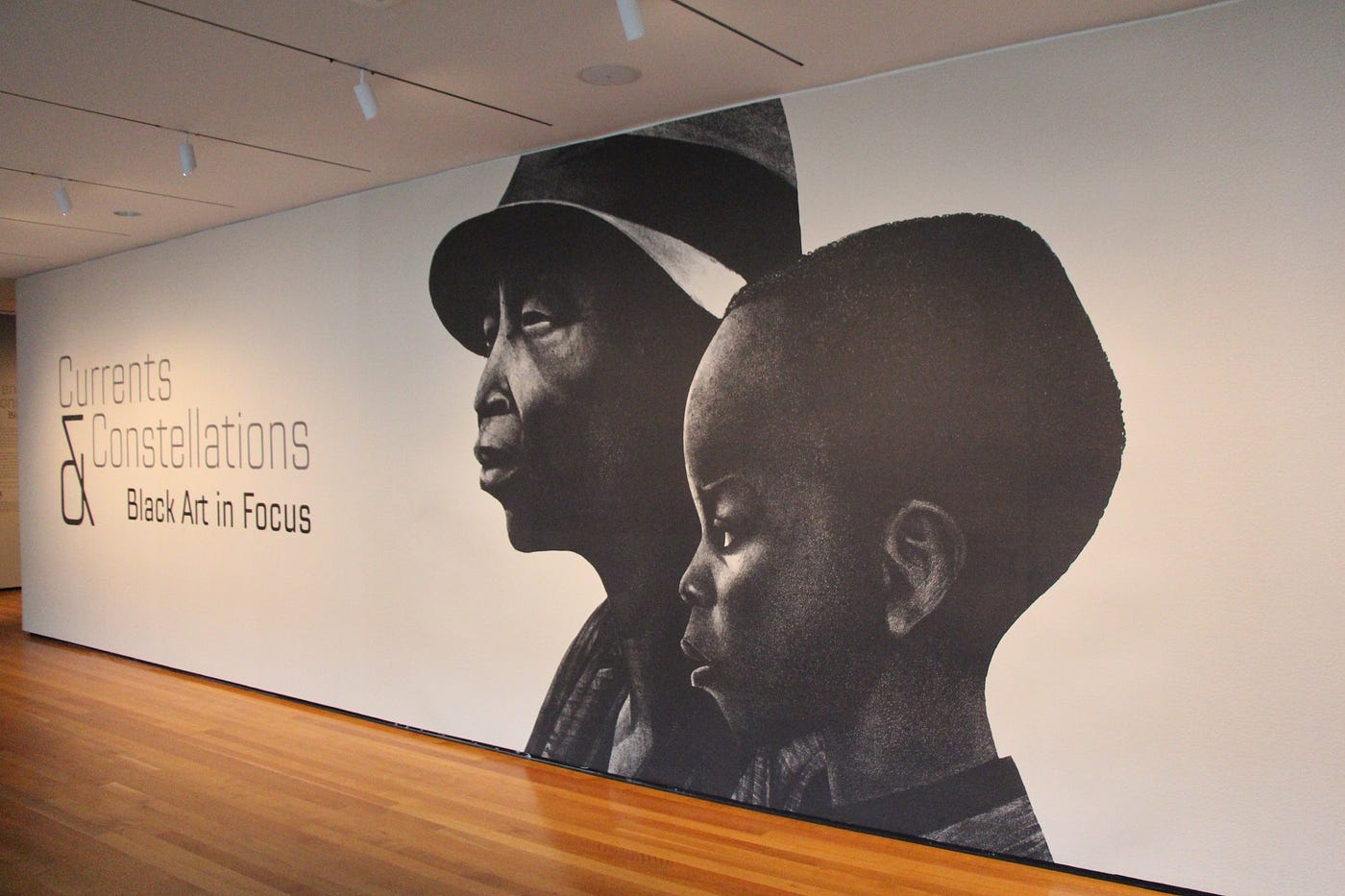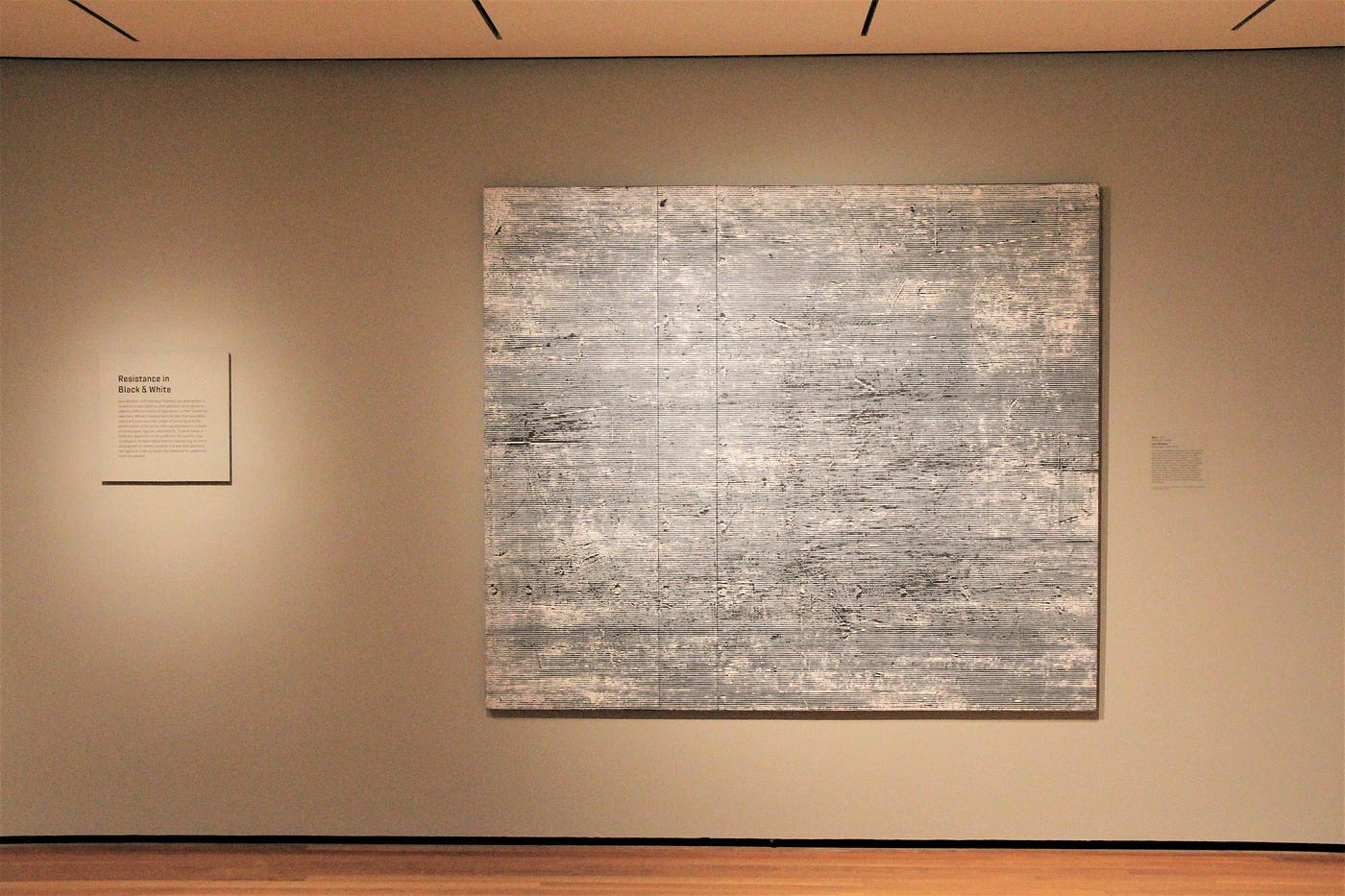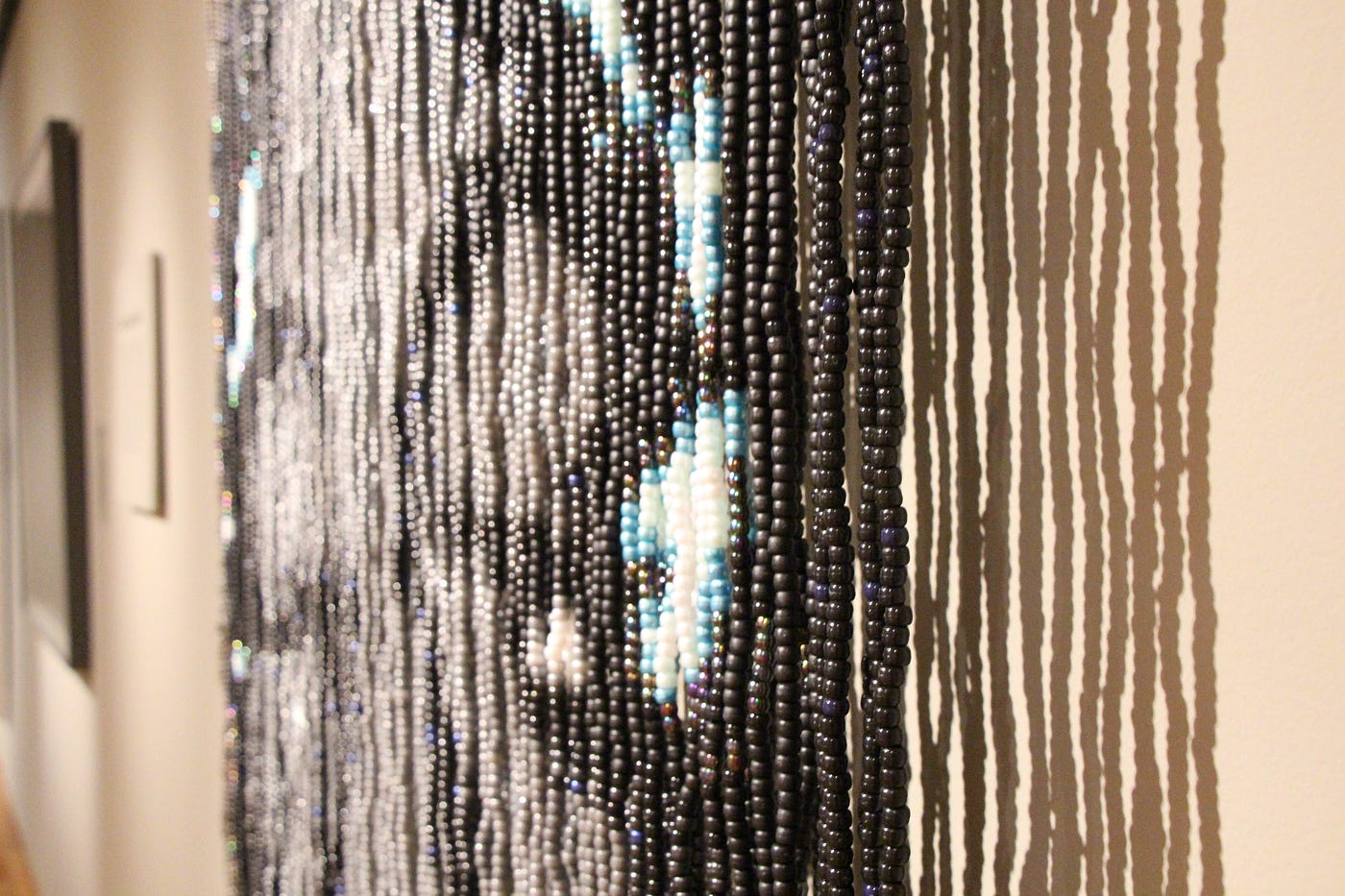Resistance in Black and White. A Spotlight on Beads Creating the… | by Cleveland Museum of Art | CMA Thinker | Mar, 2022
5 min read [ad_1]
A Spotlight on Beads Creating the “Black Pixel”
By CMA Curator Key Jo Lee with Artist Felandus Thames
Currents & Constellations: Black Art in Focus features 25 unique works created by 19 artists of the Black diaspora who are brought together to broaden a sense of Black artistic production, place Black art and artists at the center of a conversation about the relevance of art to life, and shed new light on the CMA’s permanent collection.

One of goals of Currents & Constellations: Black Art in Focus is to show multiple layers of connection between and among sections based on shared themes. However, since it is impossible to present every nuance within the space allotted for wall text, we will focus on the themed section of “Resistance in Black and White.” Within the exhibition, Jack Whitten’s large-scale monochromatic abstraction, Rho I (1977) is paired with Felandus Thames’s African King of Dubious Origins (2022), an intricately beaded reproduction of a 1990s black-and-white photograph of Rodney King after he’d been beaten by four Los Angeles police officers.

While their works may seem markedly different at first, one completely abstract and the other foundationally figurative, Felandus Thames counts Jack Whitten as one of his biggest influences. Whitten’s against-the-grain desire to produce, “Abstract painting that addresses the subject…that goes beyond the ‘formal’ as subject,” as well as his decades-long practice of keeping in-depth studio notes, have fueled Thames’s preoccupation.[1]

Just before Jack Whitten’s death in January 2018, the Hauser & Wirth gallery published a full collection of the artist’s journal entries entitled Jack Whitten: Notes from the Woodshed. The title is drawn from Whitten’s written declaration in March 2009 that, “FROM THIS DATE FORWARD MY STUDIO LOG WILL BE KNOWN AS NOTES FROM THE WOODSHED.” In it, Whitten chronicles his artistic practice, beginning in the 1960s. Whitten’s investment in the practical applications of his theories of art, as described in his journals, is directly related to Thames’s statement that, “What separates [artists] from theorists is the practical application of… ideas.[2] While the exhibition’s wall text describes a few of the ways that Thames’s work relates to Whitten’s, there is always more to know.

Below are three questions I asked Thames about his work for more insight. I hope that what follows will illuminate the “universe of ideas” present both in and between artworks by showing in more detail how one artist’s work directly influenced another’s.[3]

What inspired you to use hair beads in your work? What do they signify for you?
The impulse to use hair beads is conflated with the desire to get back to my initial creative impulses. For me, it’s an exploration of how images function and a meditation on their relationship to power. I view the camera and the artifact created by it (the photo) to be an extension of the male gaze and bound up with power. As I attempt to reintroduce figuration and portraiture in my practice, I implement the beads as a “Black Pixel” and employ them to erase or negate the gaze.
Curatorial Note: In my eyes, Thames’s pixelated image also speaks directly to Whitten’s variegated surfaces, which remind me of a staticky television wherein the image breaks down and distorts.

How does Jack Whitten’s work inform your piece, African King of Dubious Origins?
As a conceptual painter, his “Monolith Paintings” have influenced my practice immensely since I first encountered them. I’m particularly interested is his approach to surface tension. At the beginning of quarantine, I acquired several books about Jack Whitten’s practice including Notes from the Woodshed and became enamored with his studio notes and chronicling of his artistic journey. Shortly after, I was asked to participate in another museum exhibition, The Dirty South: Contemporary Art, Material Culture, and the Sonic Impulse, currently on view at Crystal Bridges art museum, and which places Whitten’s painting for Terry Adkins, Black Monolith, VI Mask (2014) in close proximity to my work, Just Hanging (2014), which allowed me a raw opportunity to spend an unusual amount of time gazing at his work in different lighting situations.
Curatorial Note: Like me, the curators of The Dirty South see a link between Whitten and Thames. Thames produced an edition of African King of Dubious Origins specifically for Currents and Constellations and in direct response to the scale of Rho I.

Why did you select Rodney King as the subject and this particular technique to execute the work?
I view this composition as a serial piece. For me, Rodney King is a surrogate for countless other black men that have had the trajectory of their lives altered by police brutality. This may seem a bit lofty, but I am trying erase or reimagine the corporeal as an abstraction and not simply a site of trauma.
Final Thoughts from Key Jo Lee
The two artists may have southern roots in common, but Thames’s answers reveal connections beyond the information you can learn in the exhibition. The beads and the concept of the “Black pixel” are used to blur or distort our gaze and disrupt easy assumptions, easy emotions and easy dismissals. Whitten’s practice has directly impacted Thames’s practice such that African King of Dubious Origins hovers in the space between figuration and abstraction allowing King’s image, life, and legacy to signify more than communal trauma. Instead, through Thames’s refiguring, his image comes to stand for the possibility of denying the gaze.
It is Thames’s desire to imagine the body as an abstraction and Whitten’s desire to for his abstractions to relate directly to a subject, fleshy or otherwise, that form a Janus-like link between their artistic practices.
I hope the combination of artist responses and curatorial notes give you a better sense of the many possible connections to be found in each of the works in Currents & Constellations and that it inspires you to look more deeply.
[ad_2]
Source link






